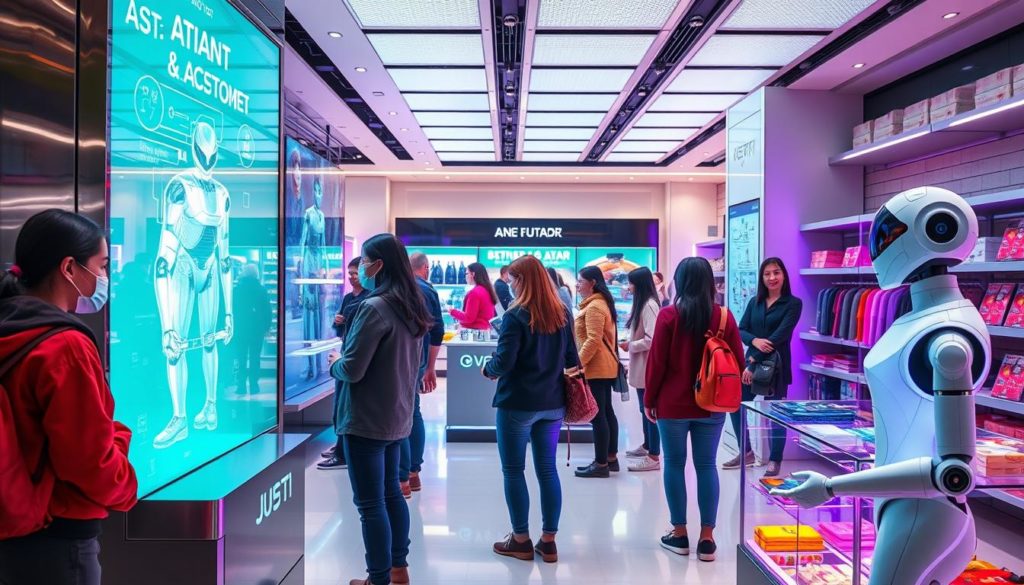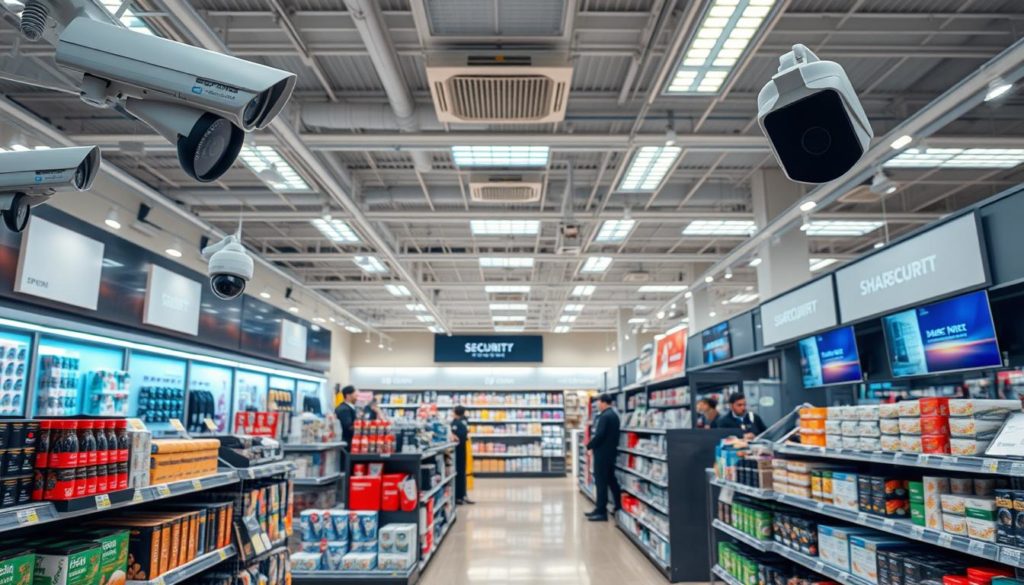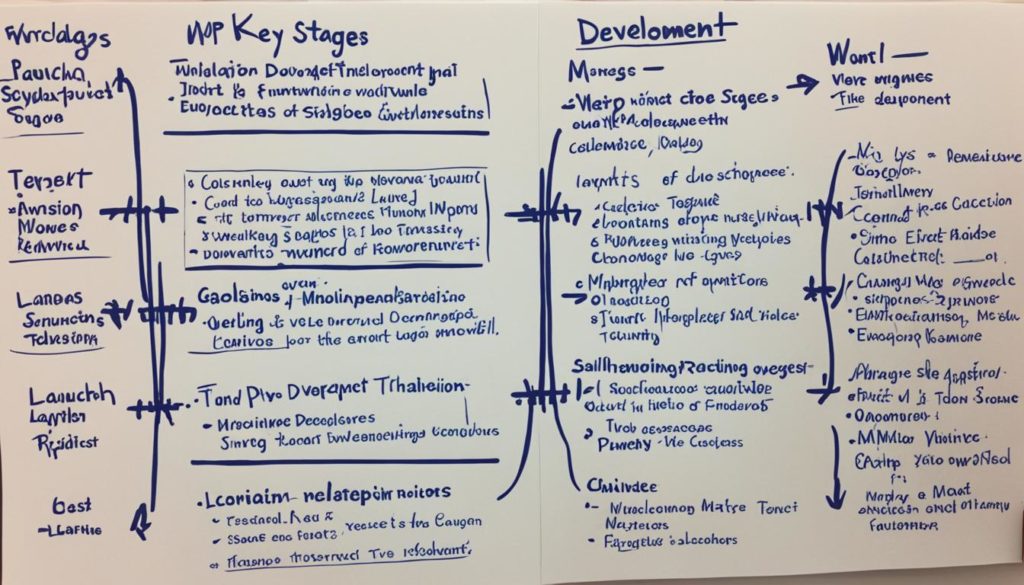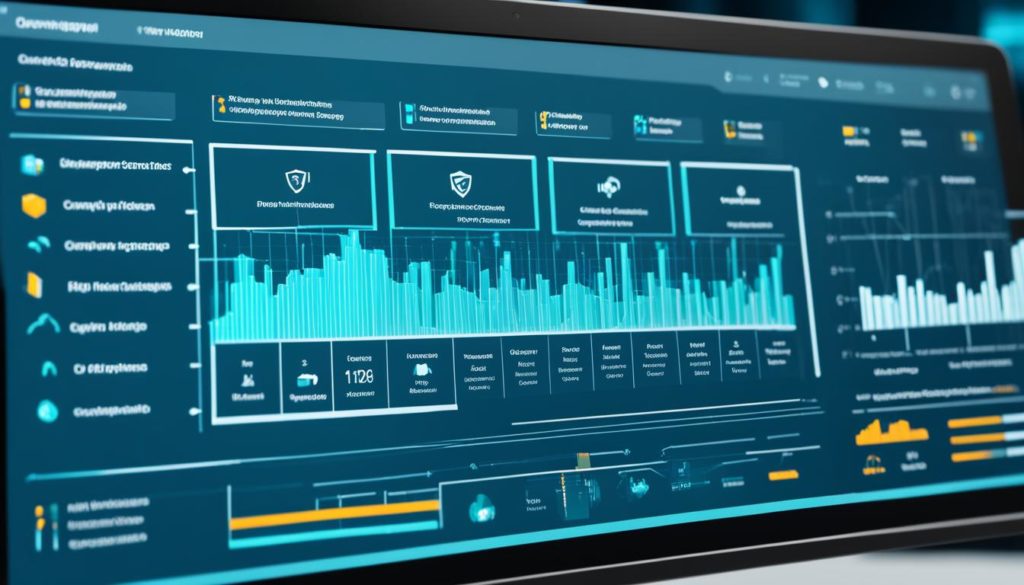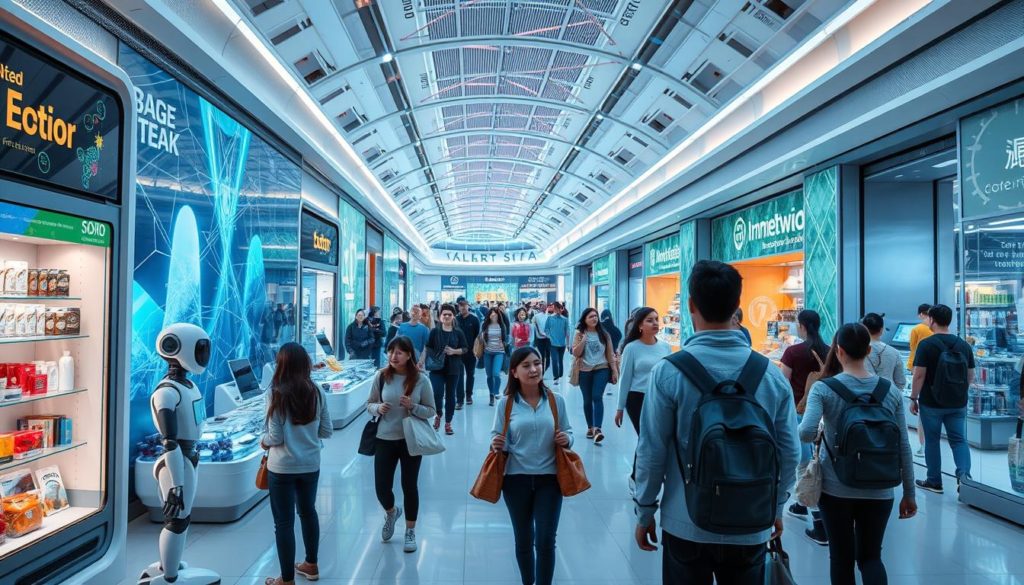
Did you know 72% of consumers now want retailers to blend online and offline shopping smoothly? This fact shows how crucial it is for retailers to be flexible and creative. Experts at McKinsey say the secret is to adjust in areas like tech, marketing, operations, and how the company is structured.
Our exploration of the future of retail matches what the National Retail Federation’s 2024 Retail’s Big Show revealed. This event brought to light new solutions and stressed the need for quick and long-term plans. It’s clear that retailers must keep up with changing consumer habits and use digital tools to succeed in the future.
Key Takeaways
- 72% of consumers expect seamless integration between online and offline shopping experiences.
- Innovative retail strategies are crucial for adapting to the retail industry’s future trends.
- McKinsey emphasizes the need for adaptable strategies in technology, marketing, operations, and organization.
- The National Retail Federation’s 2024 Retail’s Big Show highlights the importance of timely strategic decisions.
- Understanding and adapting to consumer behavior and digital advancements are essential for long-term success.
Artificial Intelligence in Retail: Beyond Hype to Tangible Impact
At NRF 2024, the shift from hype to real use of AI in retail was clear. This change shows how AI and machine learning are key for getting useful insights from big data. Leaders like Walmart and Salesforce talked about their AI plans, showing how AI can make things run smoother and improve customer experiences.
The Role of AI and Machine Learning
AI is changing retail by making inventory management better and making customer interactions more personal. Machine learning trends show that smart algorithms can guess what customers will do next. For example, Walmart uses AI to make its supply chain better, cutting costs and making customers happier. By investing in AI tools and skills, retailers can find big business benefits.
Real-World Applications of AI
AI is making a big difference in retail in many ways. From chatbots that help with shopping to predicting what customers will buy, AI is changing the game. For example, Salesforce uses AI to understand what customers want, making them more engaged and loyal. These changes are not just about being more efficient. They’re about making shopping better and more enjoyable.
Consumer Demand for Sustainable Actions
As retail moves towards being more sustainable, AI plays a key role. More and more, people want to buy things that are good for the planet. AI can help retailers make choices that are better for the environment by using resources wisely and cutting waste. Companies like Walmart are using AI to be more sustainable, showing others the way. By using AI, retail can meet the growing need for responsible and green actions.
| Company | AI Application | Impact |
|---|---|---|
| Walmart | Supply Chain Optimization | Reduced Costs, Improved Customer Satisfaction |
| Salesforce | Consumer Data Analysis | Enhanced Customer Engagement and Loyalty |
By being realistic and investing in good data and infrastructure, retail can greatly benefit from AI. Looking ahead, the real effect of AI in retail will be seen in how it meets changing needs and supports sustainable practices.
Overcoming Retail Challenges: Shrink, Inflation, and Customer Experience
In today’s fast-changing retail world, we face many challenges. We need new solutions to tackle retail shrink, inflation’s effects, and make shopping more personal. These steps can boost profits and make customers happier.
Addressing Retail Shrink
Retail shrink is a big problem, hurting retailers’ profits. To fight this, we must use strong inventory management. This means making sure we have the right amount of stock and using technology to keep track of it.
At NRF 2024, experts talked about how tech and data can help us beat shrink. For more tips on fighting shrink, check out this in-depth guide.
Inflation and Consumer Spending
Inflation affects how much people spend and how much it costs to run a store. To deal with this, we need to understand what customers want. By offering great value and using unified commerce, we can keep prices competitive without cutting quality.
This way, we meet the needs of shoppers who are watching their spending. It’s all about offering value and quality together.
Transforming Customer Experiences
Personalized shopping is key to keeping customers coming back. By using data science, we can make shopping fit what each person likes. This makes shopping smooth and fun.
It also makes customers more likely to return and stay loyal to our brand. Advanced analytics help us keep improving these experiences.
For more tips on improving customer experiences and tackling retail challenges, check out this report.
Future of Retail: Evolving Brick-and-Mortar and Digital Stores
The future of retail is changing fast, blending brick-and-mortar evolution with digital trends. Stores are turning into places where customers can fully experience products. This change is key to success, combining online and offline shopping.
Physical Retail’s New Role
Physical stores are changing. They’re not just places to buy things anymore. Now, they’re where customers can touch, try, and learn about products. This change is part of the big shift in how stores work, making shopping more engaging with interactive displays and personalized services.
Integration of Online and Offline Channels
Physical and digital retail are working together more than ever. Stores let customers order online and pick up in-store, and vice versa. This makes shopping easier and helps stores keep customers coming back.
Data-Driven Strategies for Physical Stores
Using data is key in today’s retail world. Stores use data to know what customers want, manage stock, and make shopping personal. This helps them plan better, stock up on what sells, and market more effectively.
| Aspect | Benefits |
|---|---|
| Brick-and-Mortar Evolution | Enhanced in-store experiences, higher customer engagement |
| Omnichannel Experience | Seamless integration, increased convenience |
| Digital Shopping Trends | Data-driven insights, personalized touchpoints |
Smarter Supply Chains for E-commerce Resilience
FedEx’s President noted the need for adaptable supply chains in the growing e-commerce market. Retailers are now using unified platforms with AI and ML. These tools help meet consumer demands anytime and anywhere, showing how crucial supply chain optimization is today.
Unified Platforms and AI Integration
Unified platforms with AI make operations smoother and service delivery clearer. ToolsGroup highlights the role of AI in forecasting and inventory management. These technologies help with price optimization and boost customer value, making them key in e-commerce.
Adapting to Market Dynamics
Retailers need to be quick to change in a fast-moving market. AI helps them adjust to demand changes, keeping inventory balanced. By using data analytics, retailers can predict trends and customer behavior better. This helps them plan their supply chains for e-commerce changes.
Price Optimization and Customer Value
Getting prices right is key to staying ahead and keeping customers loyal. AI tools let retailers adjust prices quickly based on the market. This keeps them competitive and boosts profits. It also ensures we give our customers consistent value, building trust and satisfaction as e-commerce evolves.
| Strategies | Benefits |
|---|---|
| Unified Platforms & AI Integration | Streamlined operations, enhanced customer experience |
| Adapting to Market Dynamics | Improved inventory management, faster response to demand changes |
| Price Optimization | Increased competitiveness, higher profits |
Conclusion
The NRF 2024 showed us a new path for the future of retail. It’s all about using new tech like Artificial Intelligence (AI) to solve old problems. This tech is making supply chains better and changing how we interact with customers online and in stores.
AI is key to making retail better. It helps us fight shoplifting, deal with high prices, and give customers a great experience. By combining online and offline shopping, we’re making retail more fun and easy.
In the end, the mix of new tech and focusing on customers keeps retail exciting and flexible. We’re all working together to make shopping smooth across all platforms. This way, we’re building a retail future that’s full of new tech and cares for the planet.
FAQ
How is the future retail industry transforming?
The future of retail is changing with new trends and strategies. These focus on digital shopping, e-commerce growth, and a smooth shopping experience across all channels.
How is AI and Machine Learning impacting the retail sector?
AI and Machine Learning are key for understanding data, making operations more efficient, and improving customer experiences. Retailers use these technologies to stay ahead and meet what customers want.
What are some real-world applications of AI in retail?
Companies like Walmart and Salesforce use AI for managing stock, marketing, and helping customers. These uses make things run better and make shoppers happier.
Why is sustainability important in retail, and how does AI help?
Today’s shoppers want sustainable practices. AI helps retailers by making supply chains more efficient, cutting waste, and managing products better throughout their life.
How are retailers addressing issues like shrink and inflation?
Shrink and inflation are big problems. Retailers are fighting them with better inventory management and AI forecasts. These strategies help keep profits up and customers happy.
What measures are retailers taking to transform customer experiences?
Retailers are making shopping more personal with data analysis. They’re improving both online and in-store experiences to meet what customers expect.
What is the new role of physical retail stores in the future?
Stores are becoming places for unique experiences that work with online shopping. They help with fulfilling orders and make shopping smoother across different channels.
How are online and offline retail channels being integrated?
Retailers are using omnichannel strategies to link online and offline shopping. This creates a smooth shopping journey for customers, no matter how they choose to shop.
What role does data play in modern physical stores?
Data is key in physical stores for making shopping personal, managing stock, and improving store performance. This leads to happier customers and more efficient stores.
Why is an adaptable supply chain essential for e-commerce?
A flexible and strong supply chain is crucial for online shopping’s growth. Using AI and ML, retailers can make their supply chains better, ensuring fast and correct deliveries.
How does AI contribute to market adaptability and customer value?
AI helps retailers quickly adjust to market changes with forecasting and price adjustments. This ensures they meet customer needs well and offer more value with personalized prices.
Future App Studios is an award-winning software development & outsourcing company. Our team of experts is ready to craft the solution your company needs.


